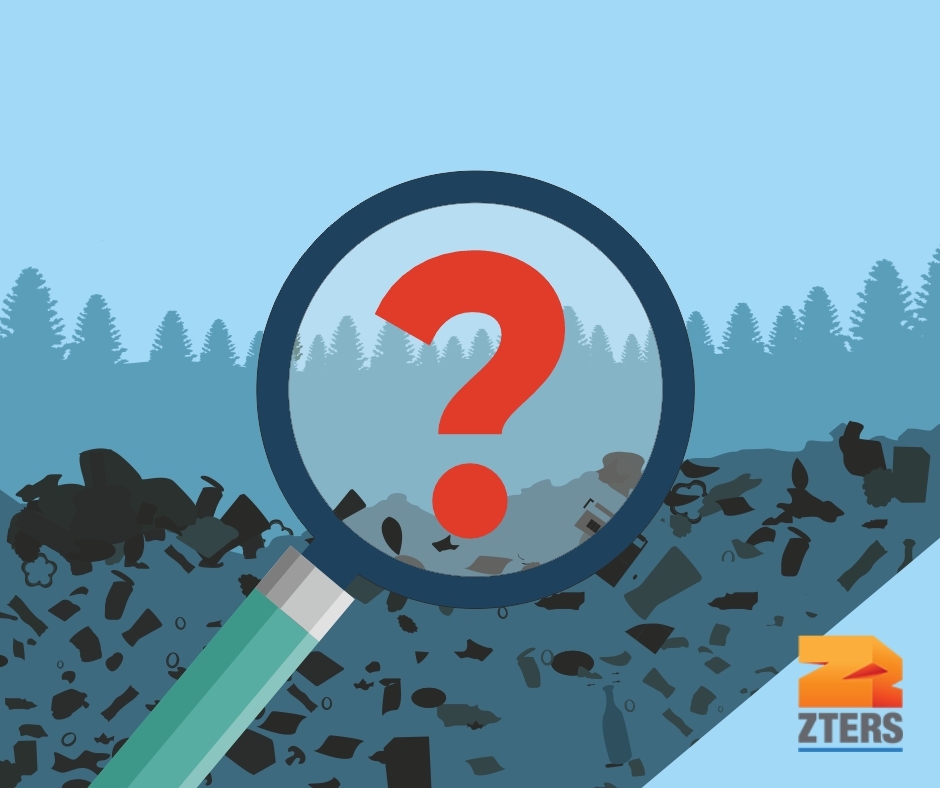What comes to mind when you think of a landfill? For most people, it’s images of vast, unsightly heaps of trash emitting harmful odors into the air. Although those are the images that are circulated most often, landfills serve as more than just dumping grounds for waste.
Landfills actually represent a crucial component of modern waste management systems. They play a pivotal role in handling the high volume of waste generated by human activity. Ultimately, we should all strive to produce less waste and reduce our carbon footprints as a result.
As eco-conscious waste service specialists, we’re very familiar with how landfills fit into the bigger waste disposal picture. We believe that understanding how landfills work can help us better appreciate their significance in maintaining environmental sustainability.
What is a landfill?
A landfill is a designated area where solid waste is disposed of and managed. Contrary to popular belief, landfills are not simply holes in the ground filled with garbage. Instead, they are carefully engineered facilities designed to contain and manage waste while minimizing its impact on the environment and public health.
Where are landfills located?
Landfills are strategically located in areas that meet specific criteria, including:
- Proximity to population centers for efficient waste collection
- Availability of suitable land with minimal environmental impact
- Compliance with regulatory requirements
While they may vary in size and capacity, landfills are typically situated in relatively remote or low-lying areas to minimize the potential for odor and visual impacts on surrounding communities.
Additionally, factors such as soil composition, groundwater conditions, and accessibility to transportation networks influence the selection of landfill sites. However, it’s important to note that the location of landfills is subject to extensive planning, environmental assessments, and community consultation to ensure responsible waste management practices.
Waste Disposal Process: How Landfills Work
Here’s a general outline of the landfill process, which includes several stages:
1. Waste Collection and Transportation
Municipal waste collection trucks or private haulers gather trash from homes, businesses, and industries and transport it to the landfill. Upon arrival, the waste undergoes initial sorting to separate recyclable materials, which are diverted for recycling or reprocessing.
2. Compaction and Layering
Waste is systematically deposited in layers within the landfill, with each layer compacted to maximize space utilization. Compaction reduces the volume of waste and minimizes the formation of air pockets, which can lead to the production of harmful greenhouse gasses such as methane.
3. Covering and Landscaping
Once a section of the landfill is filled to capacity, it is covered with a layer of soil or other suitable materials to mitigate odors, control pests, and prevent the accumulation of rainwater. Landscaping efforts might include the planting of vegetation to restore the site’s ecological balance and promote soil stabilization.
4. Monitoring and Maintenance
Landfills are monitored and maintained on an ongoing basis to ensure compliance with environmental regulations and safeguard against potential hazards. This could involve routine inspections, groundwater sampling, and the installation of gas collection systems to capture methane emissions.
Environmental Considerations of Landfills
While landfills are an integral part of waste management infrastructure, they do pose a few environmental challenges. It’s no secret and it is being addressed in a number of ways.
One of the primary concerns associated with landfills is the generation of greenhouse gasses, particularly methane, which is produced when organic waste decomposes in an oxygen-deprived environment. These days however, many landfills are equipped with methane capture systems that collect and utilize methane as a renewable energy source, reducing its impact on climate change.
Additionally, landfills must adhere to strict regulations governing their design, operation, and closure to minimize environmental contamination and protect surrounding ecosystems. Advanced engineering techniques help prevent the migration of pollutants into groundwater and surface water bodies.
Sometimes, Talking Trash is Important
Public education and participation are important components of sustainable waste management practices. Promoting waste reduction, recycling, and composting initiatives, can empower communities to minimize the amount of waste sent to landfills and prolong the lifespan of existing facilities.
Ultimately, while landfills may evoke negative connotations, they serve as vital components of integrated waste management systems. Through careful planning, engineering, and regulation, landfills can effectively manage the disposal of waste while mitigating environmental impacts.
On a related note, if your business — whether you oversee a number of facilities or just one — wants to enhance and achieve its sustainability goals, give our Commercial Waste Service division a call. We’ll perform an in-depth waste audit to evaluate your waste stream and get you where you want to be.

